/ 2025-07-04 17:58 / News
After the tide recedes in the evening, locals take travelers on exploratory walks along the vibrant coast, where they wade in the water and collect the treasures of the sea in small buckets. Nearby, Long Ning, the owner of the Mangrove Tide Family Camp, is busy handing out beach-combing equipment to a group of new arrivals.
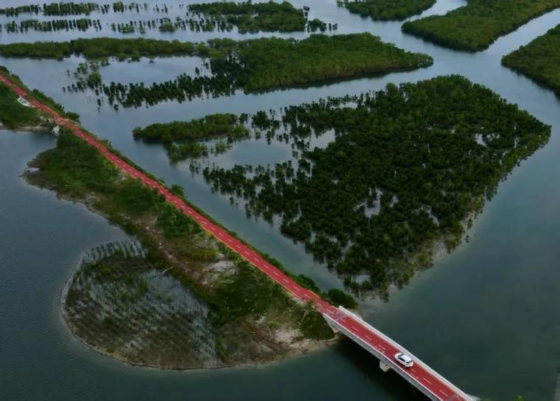
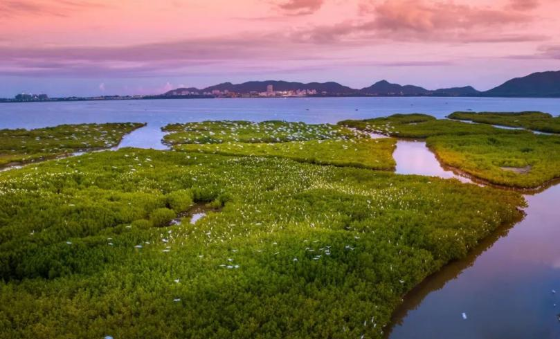
“During the peak season, we get three to four hundred people every day,” said Long, “and normally there are at least a hundred. The coastal scenic highway is open, the environment has improved, and the resources here are particularly good, so it’s a great place for fishing in the ocean. There are fiddler crabs, mudskippers, and egrets in the mangroves, and everyone likes to come see them and take photos.”
A few years ago though, Long, like many locals, was worried about how to keep making a living. Excessive pond aquaculture and badly planned development had caused severe damage to the local mangrove ecosystem, causing the wetlands to shrink, the number of bird species to drop, and the incomes of village residents, who rely on the sea for their living, to decline.
Restoration Work: From Pollution Control to Ecological Restoration
In recent years, Lingshui has focused on pollution control, carried out a comprehensive investigation of pollution sources from the river basin to the lagoon, established an environmental capacity allocation mechanism, and promoted adjustments to the area’s industrial structure. At the same time, ecological restoration work was underway, including replanting a total of 4.2 km.2 of mangrove forest, adding over 2,000 black mangrove (Lumnitzera littorea) trees, a Class I protected plant species in China. Improvements to the quality of seagrass beds was also made, and shellfish were seeded and released on 2 km.2 of the seafloor. Long term management and protection measures were put in place, and a dynamic assessment mechanism was created in order to assure the effectiveness of the restoration project.
Ecological Improvement Brings Economic Benefits
Recently, this wetland area has come back to life, becoming a valuable habitat for rare water birds. Mudskippers, fiddler crabs, shellfish, and other inhabitants of the mudflats are also flourishing, creating a healthy, vibrant ecological environment.
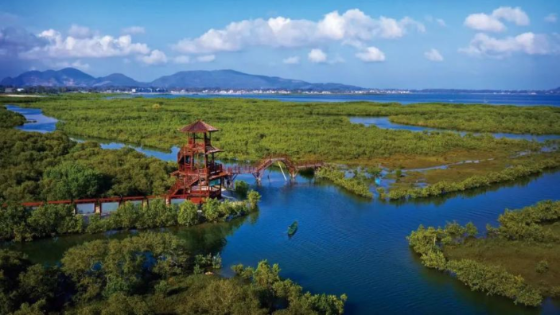
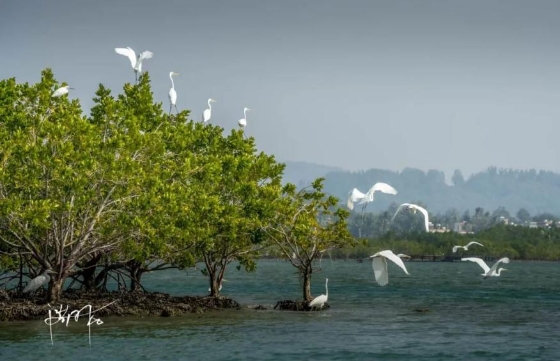
“The scenery here is incredible. Mangroves stubbornly grow in the saline-alkaline soil, and the air quality is really excellent,” said traveler Cheng Haofeng.
The beautiful ecological environment and abundant resources have become a ‘golden billboard’ attracting travelers. Local residents have changed their approach to making money, and like Long Ning, more and more are opening beach-combing excursion businesses, fishing shops, and ecological inns thanks to the resources provided by the mangrove forest.
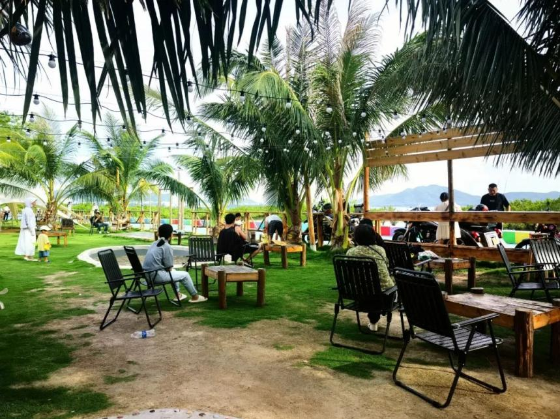
The Proof is in the Numbers
In 2024, Xincun Village and the Li’an Lagoon welcomed 1.6557 million visitors, including 517,400 overnight visitors and 1.1383 million day-trippers, with annual tourism revenue reaching 956 million yuan.
The restored mangrove forest acts as not only a solid ecological barrier, protecting inland areas from the effects of large ocean waves and typhoons, but also but also brings the economic benefits of ecological protection to the local people, achieving win-win results for both the natural ecology and economic development.
Copyright © 2020 Hainan Free Trade Port
Qiong ICP 19005356
All Rights Reserved
Office of the Hainan Free Trade PortWorking Committee
No. 69 Guoxing Avenue, MeilanDistrict, Haikou City
Hainan Province.570203, China
hnshgb xchch@sina.com
Copyright © 2020 Hainan Free Trade Port
Qiong ICP 19005356
All Rights Reserved